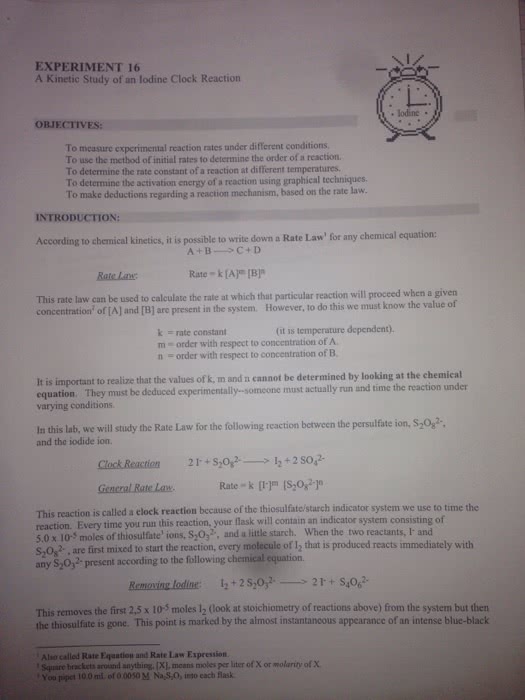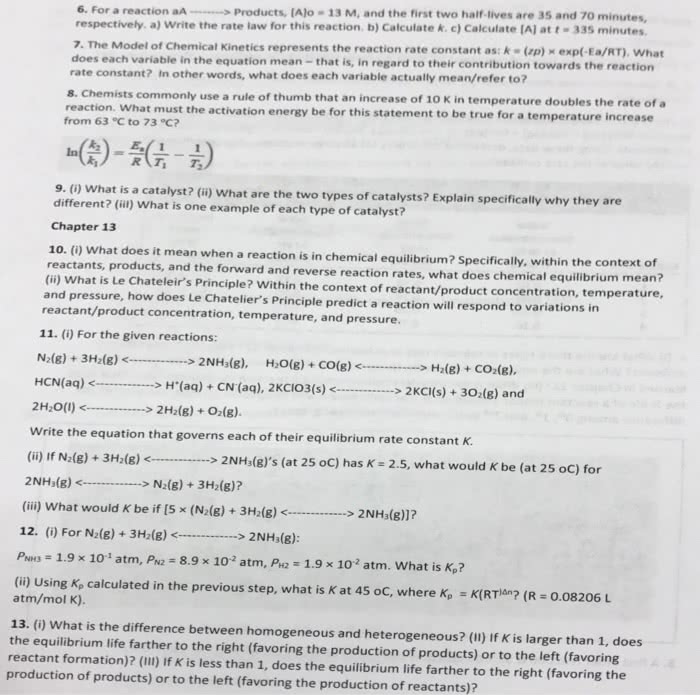Chemistry 1302A/B Chapter Notes - Chapter 5: Exponential Decay, Rate Equation, Reaction Rate
Document Summary
How do we measure the rate of reaction: measure rate of n2 or h2 consumption, or the rate of nh3 production, rate must be positive number. First order reactions measure initial rates: rate laws tells us how quickly the reactant, a, is consumed at a given time of the reaction. Integreated rate law, with respsct to time, provides the relationship between [a] with [a]0: plot integrated first-order rate law as a straight li(cid:374)e . Concept of half-life (t1/2: time required for half of reactant to be used, for a first-order reaction. Second-order integrated rate law: half-life or second-order reaction depends on [a]0, not a constant length of time. Arrhenius equation: total of three factors governing rate, rate = number of collisions x probability factor (steric factor x fraction of collision with enough energy to overcome ea. Do two identical experiments (same concs) at different t. A and ea (cid:272)a(cid:374) also (cid:271)e fou(cid:374)d graphi(cid:272)all(cid:455) e(cid:454)peri(cid:373)e(cid:374)tall(cid:455) (cid:373)easure k at various t.



